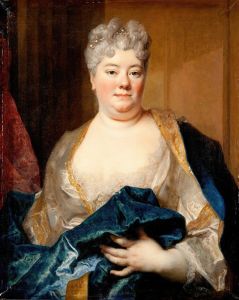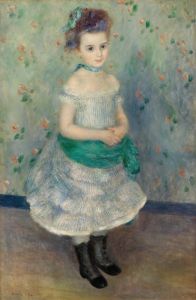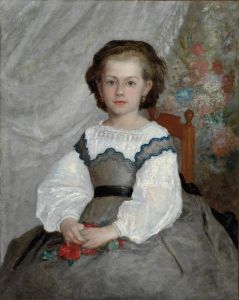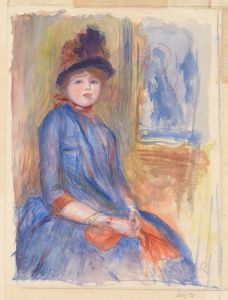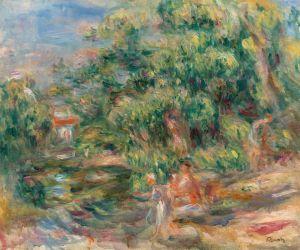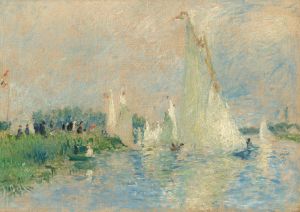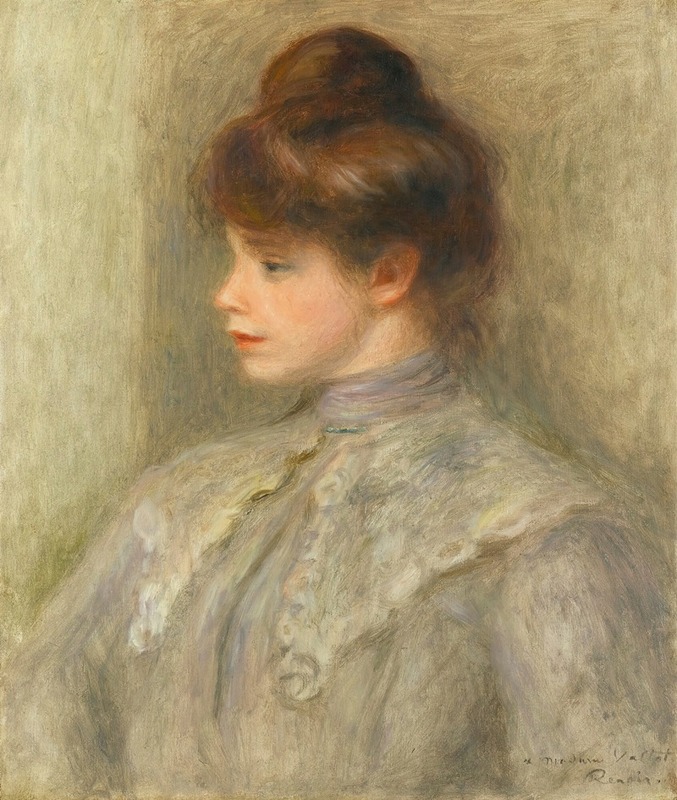
Madame Valtat
A hand-painted replica of Pierre-Auguste Renoir’s masterpiece Madame Valtat, meticulously crafted by professional artists to capture the true essence of the original. Each piece is created with museum-quality canvas and rare mineral pigments, carefully painted by experienced artists with delicate brushstrokes and rich, layered colors to perfectly recreate the texture of the original artwork. Unlike machine-printed reproductions, this hand-painted version brings the painting to life, infused with the artist’s emotions and skill in every stroke. Whether for personal collection or home decoration, it instantly elevates the artistic atmosphere of any space.
"Madame Valtat" is a painting by the renowned French artist Pierre-Auguste Renoir, a leading figure in the Impressionist movement. Renoir, born on February 25, 1841, in Limoges, France, is celebrated for his vibrant light and saturated color, often focusing on people in intimate and candid compositions. His works are known for their beauty, sensuality, and depiction of the human form.
The painting "Madame Valtat" was created around 1903. It is a portrait of Suzanne Valtat, the wife of fellow artist Louis Valtat. Louis Valtat was a French painter and printmaker associated with the Fauvist movement, known for his bold use of color and innovative techniques. The friendship between Renoir and Louis Valtat likely facilitated the creation of this portrait.
In "Madame Valtat," Renoir employs his characteristic style, blending soft brushstrokes with a warm palette to create a sense of intimacy and immediacy. The portrait captures Suzanne Valtat in a serene and contemplative pose, showcasing Renoir's ability to convey the subtleties of his subject's personality and mood. The background is typically Impressionist, with loose brushwork that suggests rather than delineates the setting, allowing the focus to remain on the sitter.
Renoir's technique in this painting reflects his mature style, where he moved away from the more rigorous Impressionist approach to a more classical form of portraiture. This period in Renoir's career is marked by a return to more structured compositions and a greater emphasis on the human figure, influenced by his admiration for the works of the Old Masters.
The painting is notable for its delicate rendering of textures, from the softness of Suzanne Valtat's skin to the intricate details of her clothing. Renoir's use of light and shadow enhances the three-dimensionality of the figure, creating a lifelike presence that engages the viewer. The gentle expression on Madame Valtat's face and the relaxed pose contribute to the overall sense of tranquility and grace.
"Madame Valtat" is housed in the Musée d'Orsay in Paris, France, which is home to an extensive collection of Impressionist and Post-Impressionist masterpieces. The museum's collection provides a comprehensive overview of the development of modern art in the late 19th and early 20th centuries, with Renoir's works being a significant highlight.
Renoir's portraits, including "Madame Valtat," are celebrated for their ability to capture the essence of the sitter while also reflecting the artist's unique vision and style. This painting exemplifies Renoir's skill in portraiture and his enduring contribution to the world of art. Through his masterful use of color, light, and composition, Renoir created a timeless image that continues to resonate with audiences today.
In summary, "Madame Valtat" by Pierre-Auguste Renoir is a significant work that showcases the artist's mature style and his ability to convey the personality and presence of his subjects. The painting remains an important piece within the broader context of Renoir's oeuvre and the history of Impressionist art.





![Prosperity [Mr. Lionel Lawson]](/imgs/214446/s/james-tissot-prosperity-mr-lionel-lawson-8cd5fc08.jpg)

